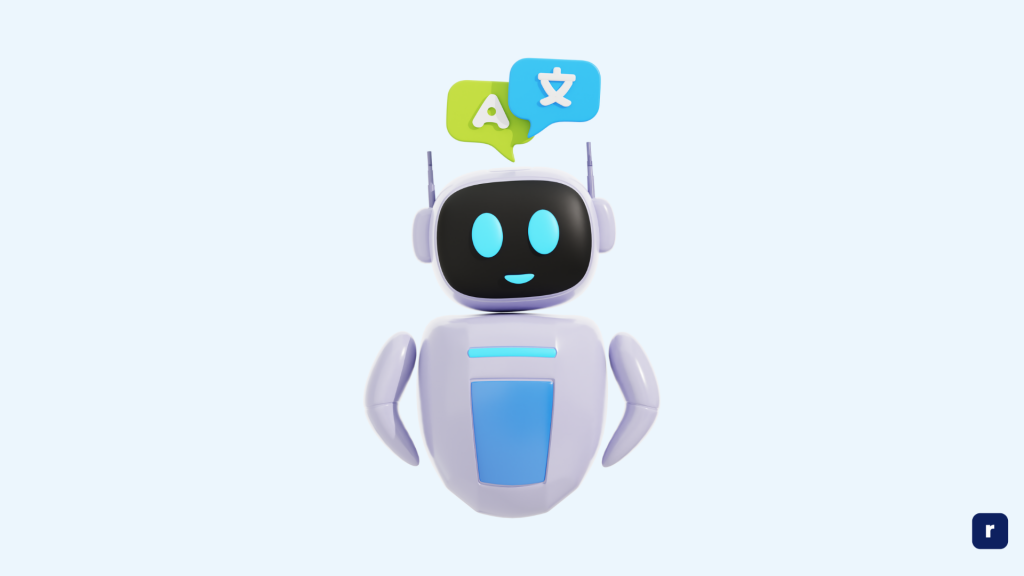Video localization is all about adapting video content so it connects with people across different languages, cultures, and regions. By translating, dubbing, and adjusting visual and audio elements, video localization helps content feel familiar and relatable for diverse audiences.
Today, AI technology is making localization faster, more accurate, and cost-effective, allowing creators to reach global audiences more easily. Let’s explore how AI-powered tools make this possible and what new opportunities they bring.
Key Takeaways
- AI translation technology lets videos speak mutiple languages, including voice cloning and lip-sync for natural dubbing.
- Using APIs, businesses can quickly translate lots of content. This saves money and reaches global audiences faster.
- Advanced features like real-time translation, auto captions, and VoiceClone make videos accessible to all.
- Brands using AI for localization see big growth in audience numbers and engagement worldwide.
- The future of video localization includes more accurate translations, support for many languages, and use in VR/AR.
What is Video Localization?
Video localization is the process of adapting video content for a specific audience, language, or culture. It goes beyond simple translation, It adjusts all elements of a video to make it resonate with viewers in different regions. The goal of localization is to make the video look and feel as if it were created for that particular audience, making it relatable and easy to understand.

The localization process involves several components. Firstly, the spoken language in the video may need to be translated and dubbed into the target language or replaced with subtitles. Translators and voice-over artists work to make sure the message is accurate and culturally appropriate. This step also includes adapting any on-screen text, such as titles, captions, or instructions, so they’re easily understood by the new audience.
Localization also considers visual and cultural elements in the video. For instance, symbols, graphics, or gestures might mean different things in different cultures. In some cases, certain hand signals, images, or colors might have unintended meanings, so they may be modified or replaced to fit the cultural norms of the new audience.
Audio elements are also adjusted during localization. Background music, sound effects, or even the tone of the narration might be adapted to suit the preferences of the new audience. For example, upbeat music in a commercial video might work well in some cultures but be seen as too casual in others. By adjusting these audio elements, localization ensures the video sounds familiar and comfortable to viewers.
Moreover, the technical side of localization ensures that the video format, file size, and subtitles work on different platforms or devices that the target audience commonly uses. For example, some regions may prefer streaming platforms while others rely on mobile apps.
The Power of AI in Video Localization
AI changes video localization by automatically translating and dubbing audio and video while also providing advanced APIs for scalable content localization. It simplifies the entire process, making it more efficient and cost-effective for content creators.
The technology incorporates real-time translation into over 130 languages, voice cloning capabilities with multiple speakers for natural dubbing, AI lip-sync to precisely match audio with video, and automatic caption generation ensuring accessibility.

Automatically translate and dub audio & video
AI makes it easy to change audio and video from one language to many others. This process helps videos reach more people around the world. With AI, you can turn Spanish to English or Hindi to English fast.
It is like having a smart tool that knows multiple languages. This tech also lets voice actors sound real in any language.
This technology uses things like VoiceClone and lip-synced features. These make sure the voice matches the video perfectly. Now, making YouTube videos for different countries feels simple.
Localize content at scale with advanced APIs
Businesses can now use an application programming interface (API) to automate video translation for lots of content quickly. The API lets companies, like SkyFi, handle 90-95% of their translation needs with machines instead of people.
This means videos can speak many languages fast and keep all the terms right every time.
SkyFi’s success shows how powerful these tools are in reaching a global audience. Soon, teams will work together in real-time on translations and connect their workflow with other online tools.
This makes creating videos for viewers around the world easier than ever before.
Key Features of AI Translation Technology
AI translation technology offers powerful tools that bring multilingual content to life. By enabling real-time translation, natural dubbing with VoiceClone, precise lip-sync, and automatic captioning, these tools make content more accessible and engaging for diverse global audiences.
Real-Time Translation into Multiple Languages
AI translation technology now supports real-time translation into a wide range of languages, including popular languages like Spanish, French, and Mandarin, as well as lesser-known languages. This tool enables creators to translate video content, such as YouTube videos, in minutes. The process is not only fast but also supports languages from all over the world, making it simple to connect with a global audience.
This feature allows content creators to expand their reach without the need to hire multiple translators or learn multiple languages themselves. By using an AI video translator, creators can make their content available to audiences worldwide, opening doors for learning, sharing ideas, and entertainment on social media and video platforms.

VoiceClone and Multi-Speaker Dubbing for Natural Sound
VoiceClone and multi-speaker features take dubbing to a new level by providing natural and realistic voices for translations.
VoiceClone technology replicates a speaker’s voice to produce a close match, while the multi-speaker feature allows distinct voices for different speakers, adding variety and clarity to the dubbing process. This technology makes dubbed videos sound authentic, preserving the speaker’s original tone and personality, which is especially valuable for educational content, tutorials, or interviews.
With these features, AI-powered dubbing offers a natural listening experience for viewers, creating a connection with the original content.
AI Lip-Sync for Precise Audio and Video Alignment
AI Lip-Sync technology aligns dubbed audio with the speaker’s mouth movements in the video. This precise synchronization creates a smooth, engaging viewing experience by making the dubbed language match the visual cues of the speaker’s mouth. AI Lip-Sync is especially valuable for content where lip movements are noticeable, like vlogs, advertisements, and language-learning videos, as it prevents distractions and keeps viewers immersed in the content.
In combination with real-time translation, VoiceClone, and multi-speaker features, AI Lip-Sync enhances the multilingual experience, making translated content feel natural and authentic. It empowers businesses and content creators to reach audiences worldwide, increasing engagement and making the content accessible to speakers of many different languages.
Auto-Generated Captions for Greater Accessibility
Auto-generated captions are a vital feature for accessibility. By generating captions automatically, AI translation technology ensures that videos are accessible to audiences who are deaf or hard of hearing, as well as to viewers who prefer reading text alongside audio. These captions display spoken words and other key sounds, making content inclusive for a wider audience.
Advanced AI tools make creating and customizing captions simple, adapting the captions to different languages and linguistic needs. Customizable subtitles and flexible visual styles further enhance accessibility, allowing users to engage with content more comfortably. Automatic captions serve as a bridge for inclusive education, entertainment, and business content, helping creators reach diverse audiences with ease.
Benefits of Using AI for Video Localization
Using AI for video localization enhances global reach, engages diverse audiences, cuts down on costs, and strengthens a brand’s authority with multilingual support.
Expands global reach and audience engagement
Advanced AI translation technology, like Rask API’s dubbing tool, has facilitated significant expansions in global reach and audience engagement. For example, Gerd Leonhard achieved a remarkable increase beyond 2.5 million audiences by using AI-driven localization tools.
Furthermore, VR World saw a substantial 22% rise in visits, and a 40% return rate by localizing content into Japanese. In addition, the Canadian Catholic association realized an impressive 30x increment in YouTube Shorts views after implementing French localization strategies.
These examples highlight how utilizing state-of-the-art AI translations can greatly improve brand authority while effectively connecting with diverse local communities worldwide.
Saves on localization costs
Using advanced AI translation technology can significantly reduce the cost of localizing video content. Case studies have shown that businesses like Ian Wharton’s and Pixellu have saved thousands on localization expenses by implementing Rask AI.
The utilization of this technology allows for substantial cost savings on translation services, making it a financially prudent choice for businesses aiming to expand their global outreach while keeping costs in check.
Additionally, Debra Davis provides free and rapid transcripts using this technology, further contributing to financial benefits through reduced operational expenses.
This capability directly aligns with key industry needs and market trends such as the demand for innovative payment methods including Apple Pay, WeChat Pay, Google Pay, Cash App, and Stripe.
It also underscores the growing necessity for automated speech-to-text solutions and user-friendly platforms tailored towards online learning. Moreover, integrating this tool into marketing strategy aligns closely with the evolving landscape of global AI content companies seeking more than just traditional language translations — they are striving to reach an ever-expanding target audience worldwide.
Enhances brand’s authority with multilingual support
By economizing on localization expenses, brands can extend their global presence and strengthen credibility through multilingual assistance. Efficient video adaptation solutions not only enhance viewer involvement but also economize on content creation costs.
For example, Fisiolution experienced a 15% increase in US involvement by employing state-of-the-art AI translation technology. Moreover, Christine Vallaure’s platform captivated new audiences with Rask AI’s adaptation services, demonstrating the favorable influence of multilingual assistance on brand credibility.
Safeguarding content for the future with accessible video translations is essential for harnessing the potential of a global artificial intelligence content firm to enrich brand standing and reach diverse market segments while upholding cost-effectiveness in content creation procedures.

AI translation Use Cases
Enhancing global learning experiences through advanced AI translation technology for educational content and reaching diverse market segments with localized marketing videos.
Educational content: Enhancing global learning experiences
Using AI translation technology to improve global learning experiences can make educational content more accessible and engaging for audiences who speak different languages.
This innovation has enabled institutions like UpPro School to use Rask AI’s VoiceClone technology for Ukrainian courses, helping them reach and impact more students. Additionally, individuals like Alex Isaacs have used this technology for remote teaching, showcasing its potential to reshape multilingual education.
By using these tools, content creators can connect better with global audiences, supporting a more inclusive approach to learning worldwide.
Marketing videos: Reaching diverse market segments
Marketing videos are a powerful tool to reach diverse market segments, especially when localized using advanced AI translation technology. By translating and dubbing content into over 130 languages in real-time, brands can effectively engage global audiences.
This not only expands the brand’s global reach but also enhances its authority with multilingual support. For instance, Rask AI transformed marketing processes for 4Endurance and Image Images, offering them innovative solutions to tackle international distribution challenges and enhance their vlogs and video ads.
This technology makes it possible to customize marketing videos towards local communities worldwide, leading to enhanced engagement across different cultural demographics. As brands continue to strive for more than just localization but also cultural relevance in their marketing strategies, the use of advanced AI translation technology becomes crucial for captivating diverse market segments.
Entertainment: Localizing films, shows, and games for international audiences
Localizing films, shows, and games for international audiences has become more feasible with advanced AI translation technology. This technology has the capability to automatically translate and dub audio & video content into 130+ languages, reducing the necessity for individual localization efforts.
VR World, for instance, saw a 22% rise in visits and a 40% return rate after implementing Japanese localization. Furthermore, the use of the VoiceClone feature allows for natural dubbing, improving user experience and broadening global reach.
This innovation not just cuts down on localization costs but also enriches engagement by making content accessible to varied audiences across the globe. Moreover, it introduces new opportunities for entertainment industries looking to expand their international viewership or player base.
With the continued expansion of language options and dialects in this domain, integrating such advanced translation technology will be pivotal in the expansion of global entertainment consumption.
Popular AI Translation Software for Video Localization
AI translation tools make it easy to adapt videos for different languages and audiences. Here’s a look at five popular options for video localization:
Rask AI
Rask AI offers quick translations and dubbing for video content in over 130 languages. It includes features like VoiceClone, which replicates the speaker’s voice, and lip-sync technology that makes translations look natural. With real-time translation and auto-captions, it’s an efficient choice for creators aiming to reach audiences worldwide without needing complex setups.
DeepL
DeepL offers a simple interface and supports many languages. It uses deep learning to understand text and translate it naturally. While it’s more text-focused, DeepL can work well in combination with video-editing software to produce localized subtitles.

(Image Source: DeepL)
Synthesia
Synthesia specializes in creating AI-generated video with real-looking avatars who speak in multiple languages. This tool translates and dubs videos with synced visuals, making it ideal for corporate training, tutorials, and promotional content. It’s popular for its ease of use, as you only need to input your script, and Synthesia does the rest.
Google Cloud Translation API
Google’s Cloud Translation API offers real-time language translation that integrates well with various platforms. It supports numerous languages and dialects, allowing users to translate subtitles or scripts quickly. Businesses can use it to build customized translation workflows, making it versatile for large-scale video localization projects.
Papercup
Papercup specializes in translating and dubbing videos with AI-driven voice-over that sounds human. It’s designed for content creators and media companies looking to localize videos for YouTube, training, or education. Papercup’s focus on natural-sounding voices makes it a great choice for maintaining audience engagement in different languages.

(Image Source: Papercup)
Future Trends in AI in Video Localization
As AI continues to evolve, the future of video localization will see improved accuracy and naturalness in translated audio. The expansion of language options and dialects, along with integration with emerging media forms like VR and AR, will shape the landscape of AI video localization.
Increasing accuracy and naturalness of translated audio
AI technology is advancing to improve accurate and natural-sounding audio translations. This means that translated videos will sound more like human speech rather than robotic or unnatural.
As AI continues to evolve, it is striving for better accuracy and authenticity in translating audio content into various languages.
Expansion of language options and dialects
AI translation technology is advancing quickly, adding more language options and dialects. This includes support for multiple languages and voice cloning in different accents. The ability to detect various speakers in videos also helps capture subtle dialect differences.
With deep learning algorithms, this AI-powered technology keeps improving, making global communication easier.
These advancements allow for more customized language solutions, adapting to the ever-changing world of digital content.
As AI continues to enhance multilingual communication, it helps create a more inclusive online space, connecting different cultures and audiences worldwide.
Integration with other media forms like VR and AR
AI translation technology extends beyond videos, playing a significant role in virtual reality (VR) and augmented reality (AR). Brands utilize this technology to overcome language barriers and connect with global audiences through immersive experiences.
As an example, VR World saw a notable 22% increase in visits and a 40% return rate by localizing their content into Japanese. The future appears promising as AI continues to play a pivotal role in creating inclusive, engaging, and accessible video translations for these continuously evolving platforms.
The integration of AI translation with VR and AR goes beyond expanding global reach; it transforms how people interact with media worldwide. By harnessing advanced AI capabilities within virtual environments, businesses can explore new markets and elevate user engagement within these state-of-the-art technologies.
Conclusion
AI is transforming video localization, making it more accurate, natural, and accessible. By supporting a wider range of languages, improving voice cloning, and adapting content for immersive media like VR and AR, AI helps creators reach more people worldwide.
Frequently Asked Questions
What is AI translation technology in video localization?
AI translation technology revolutionizes video localization by automating tasks like subtitling and voiceovers. It makes content user-friendly for different languages, such as Indonesian.
Does advanced AI translation help with online marketing?
Absolutely! By localizing videos through subtitling or voice-over automation, businesses can effectively reach more people on the web.
What about closed captioning for videos?
Closed captioning is part of the localisation process offered by advanced AI translation technology which enhances accessibility across web pages.



